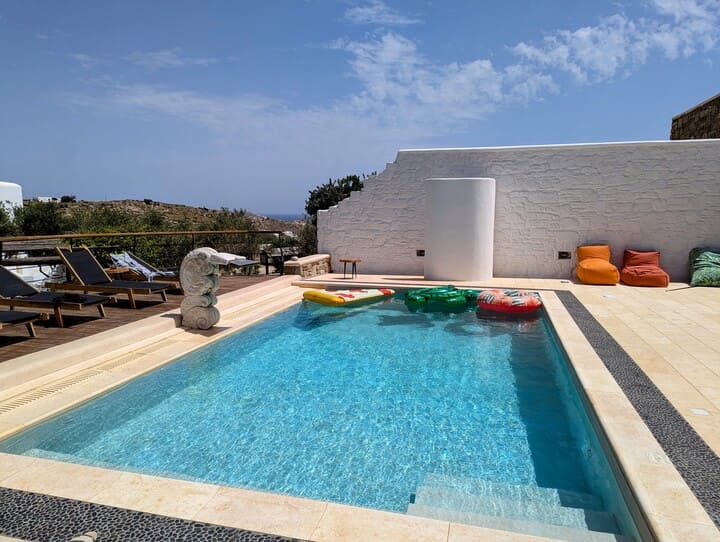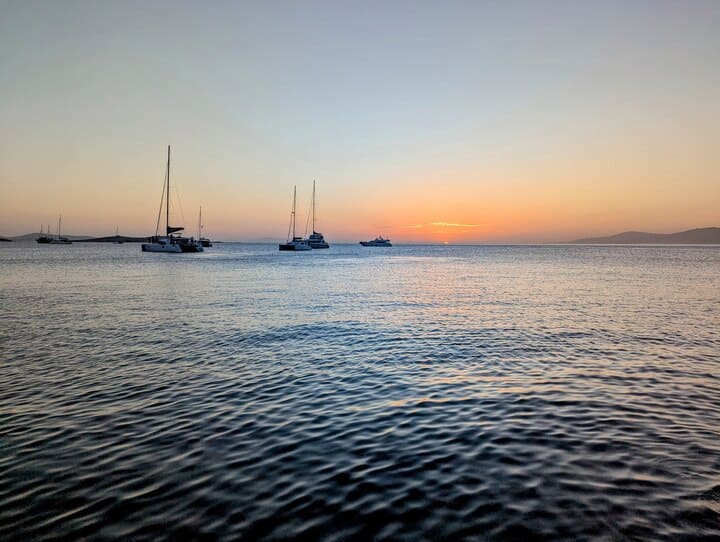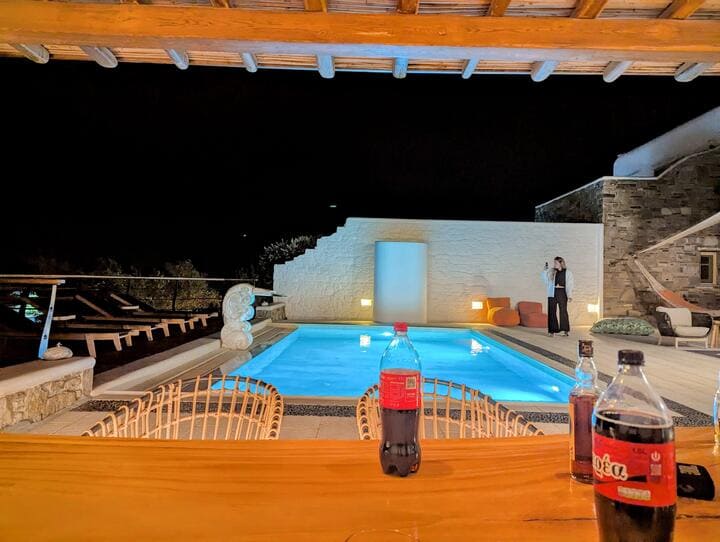Santorini and Mykonos are usually the first destinations most think of when planning a holiday to Greece. In fact, I went to Mykonos just a few months ago and had an amazing time. However, Greece is home to 200 islands, and many of them have hardly been touched by mass tourism.
Choosing some of the lesser-known islands, like Samos and Ikaria, means you get to trade crowded streets for quieter beaches and overpriced tourist menus for family-run tavernas. Pretty much every experience feels a bit more personalised, a lot less rushed and you get to see more of the authentic Greek side.
Samos Is The Home Of Simplicity

Samos gives holiday-makers a view into some of Greece’s most interesting history, ideal if you’re a bit of a history buff (like me).
For one, the island was the birthplace of one of the greatest mathematicians, Pythagoras (you know, like Pythagoras theorem). There are also landmarks like the Heraion, which is a dedication to the goddess Hera, and Pythagoreion, which is now a UNESCO World Heritage Site. And that’s merely stating one sight you’ll see, there are so many to list in Samos.
Beyond the history aspect, Samos is also a hit among nature and wildlife fans. If hiking through valleys before relaxing on beaches like Tsamadou sounds like a dream, Samos is where you want to be. Since turning 30, I’ve been hooked to hiking and Samos is a brilliant location to give this a try.
You could take on the Votsalakia to Vigla peak, which is quite challenging, but will provide panoramic views and allow you to earn your dinner. Or you could enjoy the coastal views and local monastery on the Limnionas to Paleochori hike.
You also don’t want to miss the island’s famous Muscat wine either, which is quite sweet and aromatic. You can book yourself onto a Vakakis winery tour or a tour of Metaxa Liknon.
Life is simple in Samos, you don’t have the stress of the big city life and everything goes at a relaxed pace, the food is fresh and no ultra processed foods, while conversations happen over coffee that lasts for hours.
Travel Tip: Samos is really easy to reach from Turkey via a ferry, which is a great option if you’re exploring the Aegean region with a last-minute cruise. I do love a cruise, so this is on my list for next time I go to Greece.
The Easy Life in Ikaria

Ikaria is one of the world’s Blue Zones, which means people here live longer, healthier lives. I’ve been fascinated by the blue zones ever since watching the Netflix documentary, while I’ve been embracing many of the recommendations, from walking up hills, to having more group dinners and eating sweet potatoes.
The blue zones of Ikaria is all thanks to the fresh Mediterranean food, outdoor activities, and the tight-knit communities, which is a massive pull and reason to visit the area. The food is so nice here and without all the guilt.
The natural beauty is definitely one of the highlights of Ikaria. Between the hiking trails, small stone villages, and natural hot springs, you won’t want to get on the plane home.
Seychelles Beach offers some of the clearest water you’ll find anywhere in Greece. You’ve got white pebbles contrasting with the turquoise water, with cliffs all alongside you, not to mention the caves, which are worth exploring. You can access the beach by boat or hike down the bumpy path, which takes around 15 minutes.
Then there’s a Panigiria. A Panigiria is a traditional village festival in Greece and it’s all focused around the live music, dancing, and tables filled with food and wine. If you want to experience Ikaria in all its glory, you can’t miss the chance to attend. These tend to happen in July and August, so make sure to work this out in advance when booking your tickets.
You should also stay at a family-run guest house, where you can combine eating dinner with stories about the island’s history from the family members. The owners often become the highlight of your trip, sharing local stories, cuisines and funny anecdotes you won’t find in any guidebook.
Planning Your Trip

Even though Samos and Ikaria are more remote than some of the other Greek islands, you will still need to do a bit of planning.
- When to go. The best time to visit is late spring, in May and June or early autumn in September and October. The weather is great and the sea is pleasant to swim in. July-August can be a bit too hot, while not everything is open in the winter.
- Getting there. Both islands are accessible via a ferry from Athens and neighbouring islands, so it’s easy to see them on a single itinerary. Ikaria also has a small domestic airport with quick flights from Athens if you’re short on time.
- Getting around. Your life will be a lot easier if you rent a car, especially in Ikaria, where public transport is limited and villages are scattered.
- What to pack. You’ll be spending a lot of time outdoors, so make sure you pack comfortable walking shoes, swimming gear, and a light jacket for breezier days and evenings. You don’t want to be sat out for dinner without a jacket on you, as the wind can sometimes catch you by surprise.
- Making a payment. Card payments are common in most towns, but it helps to carry some Euros with you too. I used a Revolut as my main form of payment, as there were no charges to use it abroad, but I had my usual bank card as a back-up and also brought out cash for tips.
Greece Beyond the Guidebook
Samos and Ikaria might not dominate most guidebooks, but that’s exactly what makes them so special. If you’re looking to explore Greece without all the usual crowds and have a truly genuine experience, it’s time to look beyond the more obvious islands.
I’m not knocking the likes of Mykonos, I had a great time, but the cost to eat out was extortionate, while the crowds were sometimes tiresome, therefore if you visit somewhere a bit more off the beaten path, you can have a better experience and return with money still in your pocket.